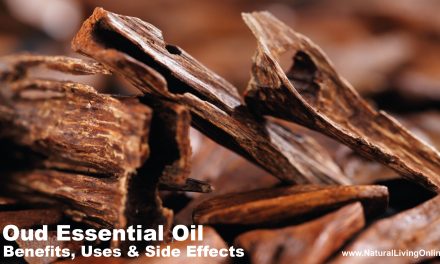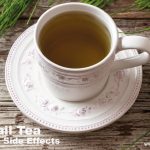Lavandin oil is a type of essential oil derived from the lavandin plant, a hybrid of the true lavender plant. Lavandin oil has many of the same properties as true lavender oil, but is typically considered to be less potent. As such, it is often used in products where a more subtle scent is desired, such as soaps, lotions, and candles.
Essential Oil Profile / Monograph
Botanical Name: Lavandula Hybrida
Common Names: Lavandin, French Lavender
Plant Family: Lamiaceae
Countries of Origin: France, Bulgaria
Extraction Method: Steam distillation
Parts Used: Flowers
Essential Oil Smell: Floral, herbaceous, camphoraceous
Essential Oil Color: Clear to pale yellow
Viscosity: Thin
Perfumery Note: Middle
Strength of Aroma: Strong
Blends Well With: Bergamot, black pepper, cedarwood, clary sage, geranium, grapefruit, juniper berry, lemon, lemongrass, marjoram, oakmoss, palmarosa, patchouli, rosemary, tea tree, thyme
Therapeutic Properties: Analgesic, anti-inflammatory, antispasmodic, antiviral, bactericidal, carminative, cicatrizant, decongestant, deodorant, diuretic, expectorant, fungicidal, immunostimulant, nervine, sedative, sudorific, tonic, vulnerary
Uses: Acne, arthritis, asthma, boils, bronchitis, bruises, burns, cold sores, colic, cuts, cystitis, dental care (toothache), depression, dermatitis, diarrhea, dyspepsia, earache, flatulence, hair care, headaches, hives, indigestion, insect bites/stings, insomnia, itchy skin, laryngitis, menstrual cramps, muscle aches/pains, nervous tension/stress, poor circulation, prickly heat, psoriasis, respiratory infections (colds, flu), rheumatism, sore throat, sprains, sunburns, sweating (excessive), urinary infections, wounds
Contraindications: Avoid during pregnancy. Use with caution on children and those with sensitive skin as it may cause irritation.
Side Effects: May cause skin irritation in some individuals. If pregnant or breastfeeding, please consult your healthcare practitioner before use.
Chemical Constituents with percentages:
Linalool (24-48%), camphor (8-16%), 1,8-cineole (5-10%), limonene (3-6%), terpinen-4-ol (2-5%), alpha-terpineol (<2%), beta-ocimene (<2%)
Frequently Asked Questions
What is Lavandin?
Lavandin is a hybrid plant that is a cross between true lavender (Lavandula angustifolia) and spike lavender (Lavandula latifolia). It is typically grown in France and Bulgaria and has a similar appearance to lavender, with long, thin leaves and purple flowers. The main difference between lavandin and lavender is that lavandin oil has a stronger fragrance and contains higher levels of camphor and 1,8-cineole. This makes it more potent than lavender oil and less suitable for use on sensitive skin.
What are the benefits of Lavandin Essential Oil?
Lavandin oil is thought to offer a number of benefits, both when used topically and when inhaled. These benefits include:
– Relaxation: Lavandin oil is often used as a natural way to promote relaxation and calmness. When used in aromatherapy, lavandin oil can help to reduce stress and anxiety.
– Pain relief: Lavandin oil may also be helpful in relieving pain. When applied topically, lavandin oil has been shown to provide natural pain relief from conditions like arthritis and muscle aches.
– Improved sleep: In addition to its relaxation properties, lavandin oil can also help to improve sleep. The calming scent of lavandin oil can help to promote better sleep quality and quantity.
– Respiratory relief: Lavandin oil can also be used to provide relief from respiratory conditions like bronchitis and congestion. When inhaled, the steam from lavandin oil can help to clear the sinuses and ease respiratory symptoms.
What are ways to use Lavandin Essential Oil?
There are many ways to use lavandin essential oil, including diffusing it, applying it topically, or adding it to a bath. You can also add it to DIY recipes for things like soaps, lotions, and cleaning products.
How can I use Lavandin Essential Oil internally?
Lavandin essential oil is not recommended for internal use. If you do choose to use it internally, please consult your healthcare practitioner first.
How can I use Lavandin Essential Oil topically?
You can apply lavandin essential oil directly to the skin or mix it with a carrier oil like jojoba oil before applying. It is important to do a patch test first to make sure you are not allergic to the oil. If you experience any irritation, please discontinue use.
Diffuser blends for aromatherapy with Lavandin Essential Oil:
1. For stress and anxiety: mix lavandin oil with bergamot, clary sage, or lemon oil.
2. For pain relief: mix lavandin oil with peppermint, eucalyptus, or rosemary oil.
3. For better sleep: mix lavandin oil with chamomile, geranium, or sweet marjoram oil.
4. For respiratory relief: mix lavandin oil with eucalyptus, peppermint, or tea tree oil.
5. For a boost of energy: mix lavandin oil with rosemary, grapefruit, or lemon oil.
6. For relaxation: mix lavandin oil with ylang ylang, bergamot, or chamomile oil.
7. For concentration: mix lavandin oil with rosemary, basil, or peppermint oil.
How can I use Lavandin Essential Oil in bath?
You can add lavandin essential oil to your bath by mixing it with a carrier oil like jojoba oil or sweet almond oil. You can also add it to Epsom salt or baking soda to help disperse the oil in the water.
Historical use of Lavandin as a herbal medicine:
Lavandin has been used for centuries as a herbal medicine. It was used to treat respiratory infections, digestive problems, and skin conditions. It was also used as a relaxant and to improve sleep.
Is Lavandin Essential Oil safe for kids?
Lavandin essential oil is generally considered safe for kids when used in diffusers or diluted properly for topical use. Please consult your healthcare practitioner if you have any concerns.
Is Lavandin Essential Oil safe for pets?
Lavandin essential oil is generally considered safe for pets when used in diffusers or diluted properly for topical use. Please consult your veterinarian if you have any concerns.
DIY recipes using Lavandin Essential Oil:
Bath Bomb
Ingredients:
1/2 cup baking soda
1/4 cup citric acid
1/4 cup epsom salt
1 tablespoon lavandin essential oil
1 tablespoon carrier oil (jojoba, sweet almond, etc.)
Instructions:
1. In a bowl, mix together the baking soda, citric acid, and epsom salt.
2. Add the lavandin essential oil and carrier oil and mix until well combined.
3. Spoon the mixture into a mold of your choice.
4. Let the bath bomb dry for 24 hours before using.
Body Butter
Ingredients:
1/2 cup shea butter
1/4 cup coconut oil
1/4 cup almond oil
1 tablespoon lavandin essential oil
Instructions:
1. In a double boiler, melt the shea butter and coconut oil.
2. Remove from heat and add the almond oil and lavandin essential oil.
3. Mix well and pour into a jar.
4. Let the body butter cool completely before using.
Lavandin Sugar Scrub
Ingredients:
1 cup sugar
1/2 cup almond oil
1 tablespoon lavandin essential oil
Instructions:
1. In a bowl, mix together the sugar and almond oil.
2. Add the lavandin essential oil and mix well.
3. Pour into a jar and use as needed.
Room Spray
Ingredients:
1 cup distilled water
1/4 cup witch hazel
10 drops lavandin essential oil
Instructions:
1. In a glass spray bottle, mix together the distilled water, witch hazel, and lavandin essential oil.
2. Shake well and use as needed.
Lavandin Candle
Ingredients:
1 cup soy wax flakes
1/2 cup beeswax
1/4 cup coconut oil
1 tablespoon lavandin essential oil
Instructions:
1. In a double boiler, melt the soy wax flakes, beeswax, and coconut oil.
2. Remove from heat and add the lavandin essential oil.
3. Mix well and pour into a candle jar.
4. Let the candle cool completely before using.
References:
This website does not provide medical advice.
All information provided on this website, and on associated social media networks, including but not limited to texts, images, and numbers are for general information purpose only. It is not intended as medical advice and it does not include all possible precautions, side effects, or interactions that may occur. Neither NaturalLivingOnline.com nor its author/founder take responsibility for how you use this information. Statements contained on NaturalLivingOnline.com have not been evaluated by the FDA. You should conduct thorough research via multiple sources and consult your physician or qualified doctor before using any essential oil or herbal remedy. Information on NaturalLivingOnline.com must not be relied upon for medical, legal, financial or other decisions.













